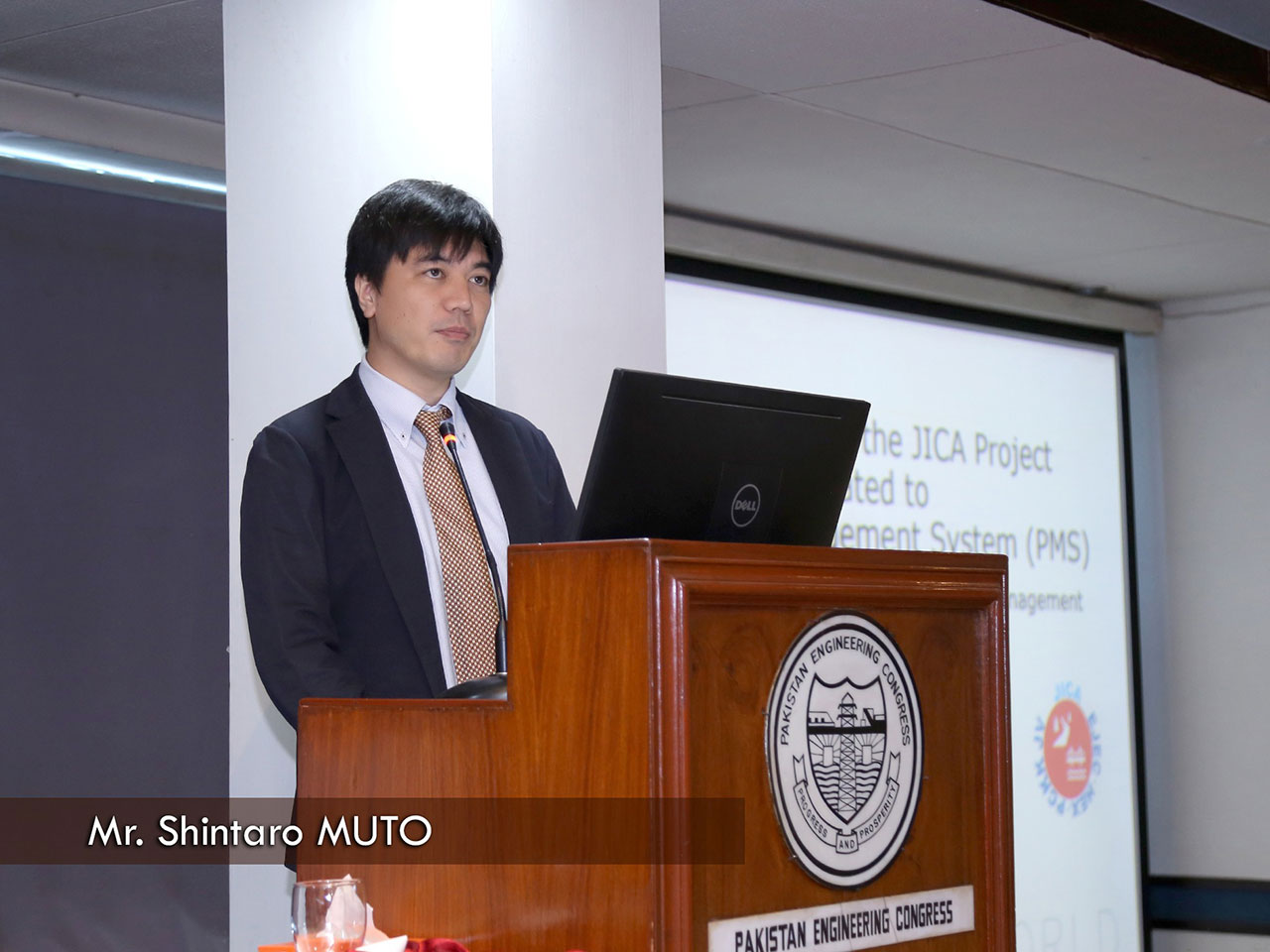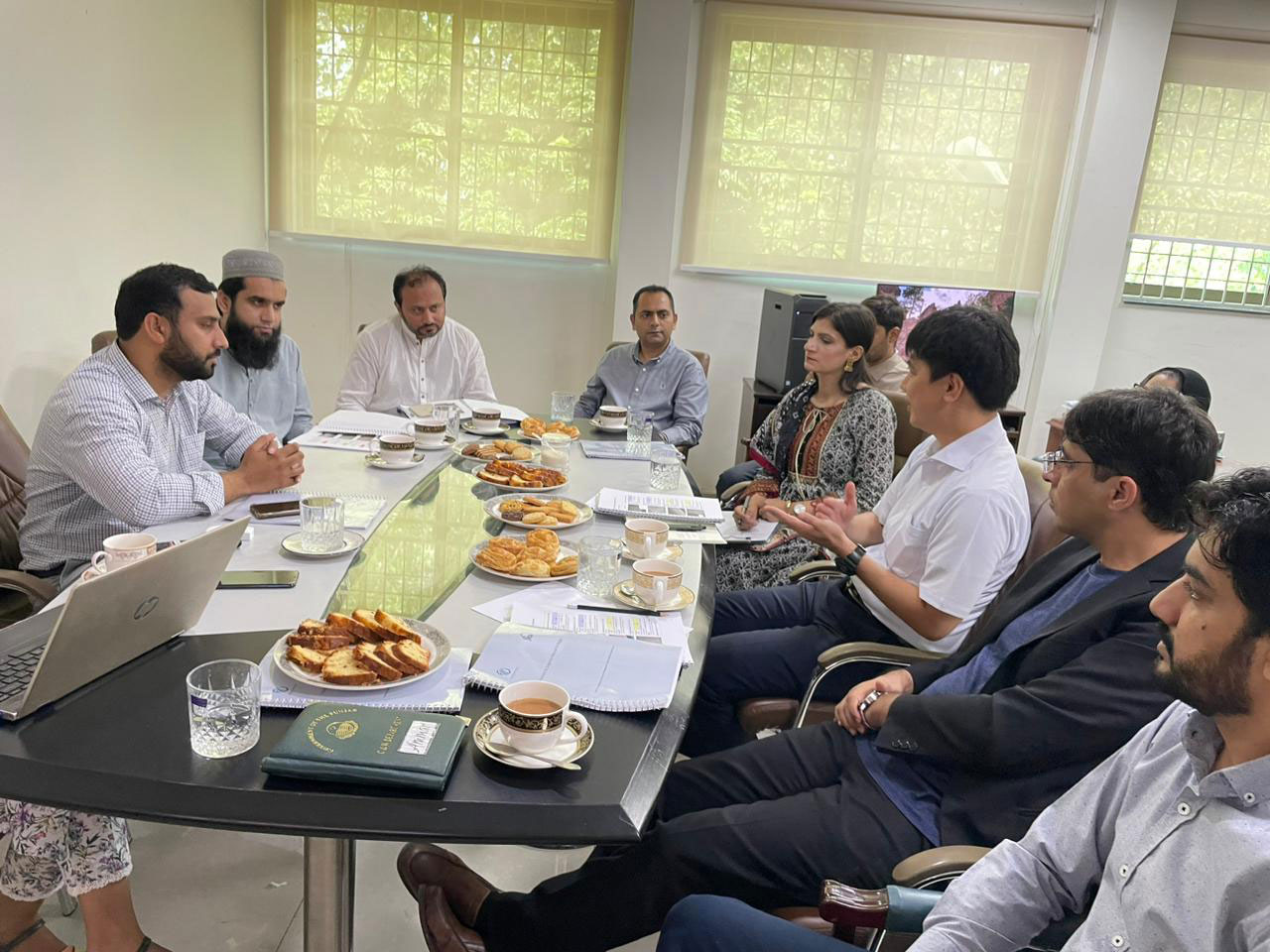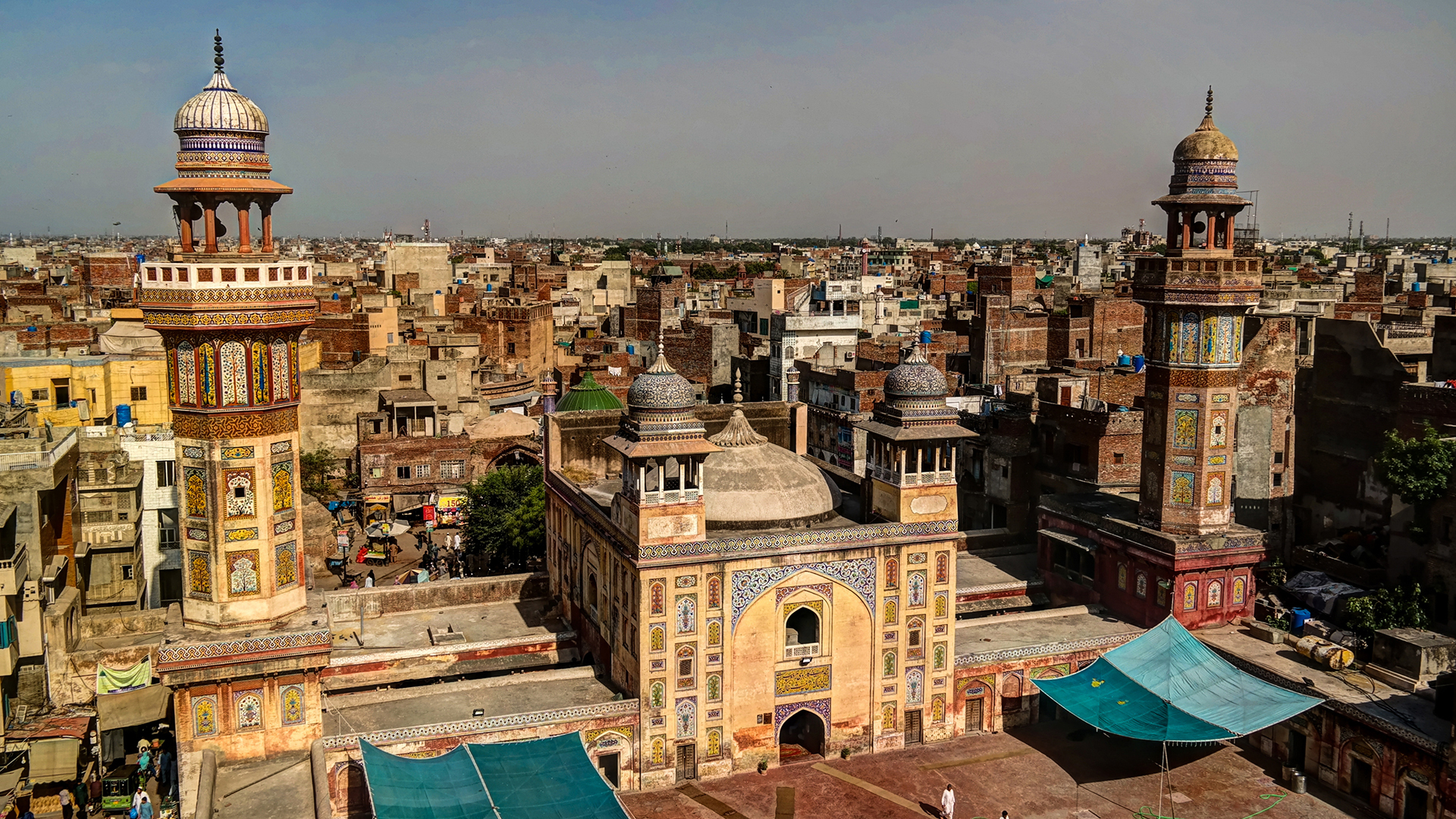Punjab province, the most populous province in Pakistan, is said to have a total of 87,700 km of local roads within the province. However, maintenance was a major issue due to a lack of human resources and skills, as well as an underdeveloped database system. At the request of the Punjab provincial government, a JICA technical cooperation project was implemented, and PACIFIC CONSULTANTS participated as the prime company of a joint venture consisting of three companies. Shintaro Muto of Global Company International Infrastructure Development Department was appointed as Deputy Chief Engineer Consultant.
Overview of the Project for Capacity Development of Road Asset Management System in Punjab
Project implementation period: November 2022 to November 2025
Counterpart: Punjab Department of Public Works (C&W), Islamic Republic of Pakistan
Objective of the project: To promote understanding of road and bridge maintenance management based on the PDCA cycle of the C&W Department of Public Works (C&W), establish a system and improve inspection and diagnostic capabilities, thereby enabling the selection of repair locations and prioritization of routes within budget, thereby contributing to the realization of maintenance management of road and bridge facilities.
Islamic State of Pakistan
A country located in South Asia, bordering the Arabian Sea. A federal republic consisting of four states and four regions. The country is made up of mountainous regions in the west and north and the plains of the Indus River basin. It borders China and Afghanistan to the north, India to the east, and Iran to the west. It has the second largest Muslim population in the world.
Area: 796,000 km2 (approximately twice the size of Japan) Population: 241,490,000 (2023 census)
Capital: Islamabad Religion: Islam (State religion)
(Created based on JICA materials from the population data from the Ministry of Foreign Affairs.)
INDEX
- Technical cooperation request from Punjab Province, Pakistan
- Shift from reactive to preventative maintenance
- Divided into three phases, the project will be carried out over a three-year period
- The goal is to make it possible without directly interfering
- Always think together, not in a hierarchical relationship
- What is created by trust between people
Technical cooperation request from Punjab Province, Pakistan
The Islamic State of Pakistan (hereafter referred to as Pakistan) has a vast land area approximately twice that of Japan. There are roads, air, and rail as means of transportation, but 90% of passenger transport and 95% of freight transport depend on roads, so roads play a major role. The total length of the roads is approximately 260,000 km, and expressways and national highways are under the control of the National Highway Corporation, while local roads are under the control of the Provincial Public Works Department (C&W) and prefectures.
Punjab province has the largest population in Pakistan with a population of approximately 110 million, and is home to several logistics and economic hubs such as the cities of Lahore and Multan. The total length of roads managed by the province is approximately 87,700 km, which is about 30% of the national road network, and the number of registered vehicles of four-wheeled vehicles or more accounts for more than half, at approximately 2.46 million of the approximately 4.4 million registered vehicles in the nation, making the maintenance of road infrastructure in Punjab province a lifeline for socio-economic activity in Pakistan.
However, due to issues such as budgetary shortages, a lack of engineers and technical skills, and an underdeveloped system, daily inspections were difficult to carry out. For national highways that had similar problems, JICA implemented the Pakistan Bridge Maintenance Project for 34 months from July 2016 to April 2019, and PACIFIC CONSULTANTS was in charge. This strengthened the maintenance capacity of the national highway administrator, and the next step will be to improve the maintenance capacity of local road networks in the main province of Punjab and other areas, in order to begin maintaining stable social infrastructure.
This project was the second JICA technical cooperation project, based on a request from the Punjab government. A joint venture of three companies, including PACIFIC CONSULTANTS, was commissioned, and Shintaro Muto participated in the project from its inception in November 2022 as deputy chief Chief Engineer.

Shift from reactive to preventative maintenance
"In Punjab province, there was absolutely no planned maintenance of the roads under its jurisdiction," Muto recalls, looking back at the situation before the project began.
"The standard approach is to respond after a hole appears in the road or a bridge is destroyed, and then contractors are ordered by the state government to rush in to carry out repair work. But this makes it impossible to predict when, where, or what kind of response will be needed. Also, because repairs are carried out after the road has become impassable, the work is large-scale and expensive. It also makes it impossible to plan budgets for maintenance. We need to switch to a preventive maintenance approach, where regular inspections are conducted to understand the situation and repair work is carried out in a planned manner, starting with the areas that are most needed. We aimed to build a maintenance system in four steps: first collecting inspection data, then analyzing that data, and then based on the results of the analysis, setting priorities, securing a budget, and formulating a maintenance plan, and finally carrying out repairs and reinforcement."
Divided into three phases, the project will be carried out over a three-year period
In the first year of the project, which took a total of 36 months, work was carried out in parallel on inspecting roads and bridges, collecting data, and developing application software to input that data into a database. Six local staff were hired as inspectors, and software development was undertaken by Japanese engineers and local IT companies. In addition, a draft inspection and diagnosis manual and repair handbook were prepared for roads and bridges, and classroom and on-site training was also conducted.
Data on the condition of road pavement can be collected by running measuring vehicles, but the state government had no experience inspecting bridges, and did not even understand the basic principle that bridges should be inspected from below.
"This was one of the first things I learned as a bridge engineer: you can't tell the condition of a bridge by looking at it from above, that is, from the pavement or the side. You need to go underneath and check for damage to the underside of the deck, the girders and supports, the piers and abutments, etc. Of course, to do this, it's also necessary to secure access under the bridge and clean the inspection points. I taught them each step, starting with those basics."

In the second year, the counterparts learned how to analyze the captured data using the bridge maintenance management system and how to prioritize repairs based on the analysis results. At the same time, they continued revising the inspection and diagnosis manual and repair handbook created in the first year, and now in the third and final year, they are working on creating budget requests and repair plans based on repair priorities.
The goal is to make it possible without directly interfering
The C&W staff who served as counterparts for the project were extremely enthusiastic about the project, and it progressed smoothly.
"Maintenance is essentially steady work. With limited budgets and personnel, the counterpart staff did not seem very proactive at first, but this began to change as the project progressed. Their understanding of the importance of maintenance work deepened, and they began to feel confident and proud of their work. They began to approach the work in a positive manner."
One of the goals of this project was to bring out that enthusiasm and establish it.
"A road maintenance system based on the idea of preventive maintenance has already been established and implemented in Japan. However, our mission is not to simply bring that technology to Punjab. The purpose of the project is not to provide the Japanese system, but for our counterparts to think for themselves and develop the optimal system for their own country, and then to be able to operate it themselves. In that sense, it was extremely important for them to recognize anew the value of maintenance work."
A key point in this project is that Japanese experts do not take the initiative, but rather provide support, stepping back and thinking together with their counterparts so that they can act independently.
"When it came to difficult problems, we offered hints, such as how things are done in Japan, and suggestions based on our own experience, but we did not provide the answers. It was important for the counterparts themselves to find the optimal solution for Punjab. Once this project is over, the counterparts will have to run the PDCA cycle for maintenance on their own."

Always think together, not in a hierarchical relationship
The approach of providing support and encouraging self-reliance is both a challenge and an interesting aspect of the maintenance and management capacity improvement project.
"There is no hierarchical relationship between us and our counterparts, and we work on an equal footing both during field surveys and in the office. Rather than just being taught the answers and being asked to memorize them, we need to think about everything together."
That is why trust between people is so essential, and sometimes it can feel difficult.
"Unforeseen things happen during projects. National staff would ask for more paid vacation than was stipulated in their contracts, or say they were quitting because they were going to study abroad. In Pakistan, even if the engineers themselves knew that something would be difficult in practice, they would never say, 'I can't do it,' but would answer, 'OK, I can do it.' I think that's part of the national character. Because of this, things that we had decided to do by this month would sometimes never be completed. They had different attitudes toward work, and often times things that we had never imagined would strike a chord with them."
However, Muto believes that this is also the best part of working overseas.
"Getting to know the unique customs and people of various countries through collaborative work is a new learning experience for me and broadens my horizons. I would never be able to experience this if I stayed in Japan."
What is created by trust between people
The project is progressing smoothly, with only a few months left. After the project is completed, the counterparts themselves will be in charge of the maintenance cycle of data collection, analysis, determining priorities, obtaining budgets, and carrying out repairs and reinforcements. They say they are feeling a sense of accomplishment.
"A local staff member who had just graduated from university joined the project, but after we entrusted him with a certain task, he grew rapidly. Just like the members of our counterparts, if we trust them and leave them to them, they always give us an answer. This made me realize once again the importance of trust and the great power that can be unleashed when that trust is established."
Muto originally joined PACIFIC CONSULTANTS because he wanted to work on bridges. He spent the first 10 years designing bridges in Japan, and about 10 years ago he began working overseas, which he had hoped to do. Currently, in addition to the Punjab project, he is in charge of a bridge maintenance project in Kenya and a bridge replacement project in Palau, and will continue to be involved in new overseas projects in the future.
Muto is looking forward to what new encounters he will have next.







